#land use
Text
One of my maybe unpopular opinions: I think golfing involves an unethical use of land and I don’t like people who golf.
#golf#unpopular opinion#golfing#land use#protect the earth#protect the environment#environmentalism#leftist#leftblr#communist#socialist#communism#socialism#anti capitalist#anti capitalism#leftist politics#human rights#anarchism#anarchist
1K notes
·
View notes
Photo

Argentina in a nutshell, for everyone who isn't from there.
162 notes
·
View notes
Text
The EU, which plans to make Europe the first climate-neutral continent by 2050, spends nearly one-third of its entire budget on CAP subsidies. “The vast majority of that is going towards products which are driving us to the brink,” said Paul Behrens, an environmental change researcher at Leiden University and co-author of the study.
The subsidy scheme, which pays more to farms that occupy more land, results in “perverse outcomes for a food transition” because livestock take up more space than plants and are inefficiently fed crops that could have gone to people, the researchers found. To produce the same amount of protein, beef requires 20 times more land than nuts and 35 times more than grains.
103 notes
·
View notes
Text
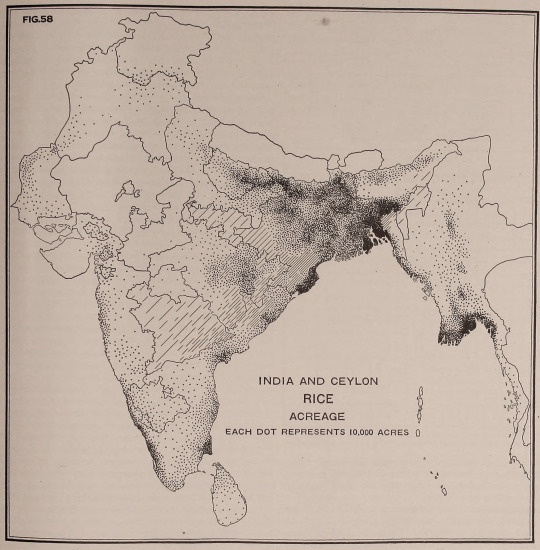
Fig. 58. India and Ceylon rice acreage. Each dot represents 10,000 acres. Geography of the world's agriculture. 1917.
#maps#charts#diagram#india#sir lanka#agriculture#each dot#dots#rice cultivation#land use#nemfrog#1917#1910s
106 notes
·
View notes
Text
Healthy worm populations are crucial for entire ecosystems, not just birds. Earthworms are ecosystem engineers. As they burrow and feed underground, they break down organic matter, which is then passed along the conveyor belt to smaller organisms. Wormholes create porous structures for water and air to travel through. They play a crucial role in nutrient recycling and soil fertility, which means they significantly contribute to global food production.
“Earthworms are vital at looking after the soil, which is the basis of all life and what grows our food,” said Barnes.
If trends revealed by her study hold true elsewhere the loss could affect our ability to feed a growing human population. Worms’ contribution to the world’s grain harvest matches that of Russia, according to a 2023 study, which found they help make 140m tonnes of food a year. This would make them the fourth largest global producer if they were a country.
Another paper from last year found more than half of the world’s species live in the soil. Yet despite their importance in supporting ecosystems and providing food for humans, soil invertebrates have been “woefully neglected” in biodiversity assessments. Extensive drainage, pesticide use and the use of inorganic fertilisers are likely to be driving them, but data on trends in population abundance are generally only available from studies covering small areas.
41 notes
·
View notes
Photo

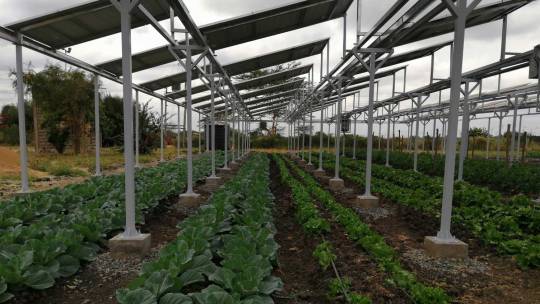
Innovative Project Is Growing Crops Beneath Solar Panels in Kenya
The project, officially called “Harvesting the sun twice,” is designed to assess whether or not agrivoltaic systems could be successfully used in rural East Africa.
By combining the land dedicated to solar panels with the land dedicated to agriculture, it is possible to avoid some of these pitfalls. Growing plants beneath elevated solar panels protects them from the sun in hot, dry places and helps the soil retain moisture, the University of Sheffield explained. The strategy has worked successfully in Global North countries like France, Germany and the U.S., but has not been tested in the Global South, according to SEI and The Guardian.So far, the results have been promising, The Guardian reported.
In Kajiado, cabbages cultivated under 180, 345-watt solar panels were a third larger and healthier than the control group. Eggplants, lettuce and corn also fared better in the panels’ shade.
1K notes
·
View notes
Text
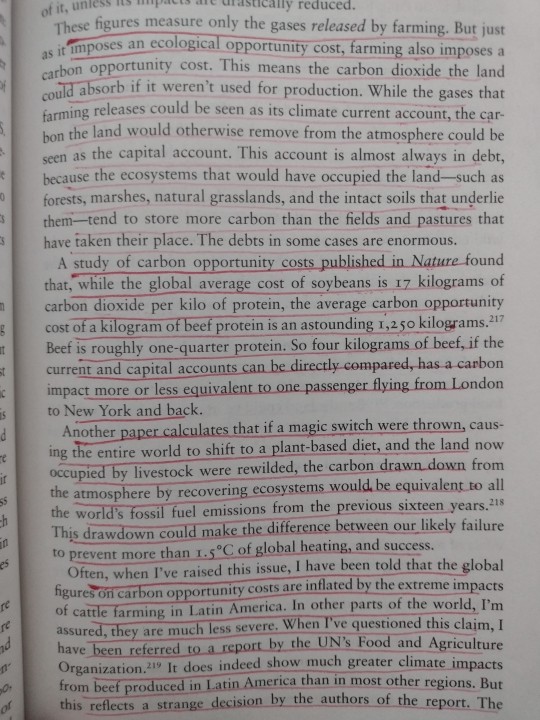

From Regenesis: Feeding the World Without Devouring the Planet by George Monbiot
36 notes
·
View notes
Text

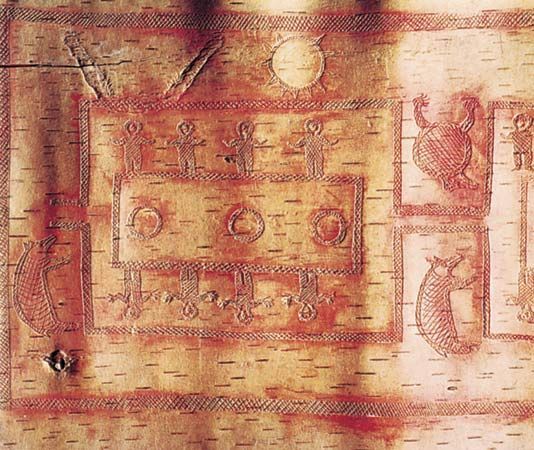

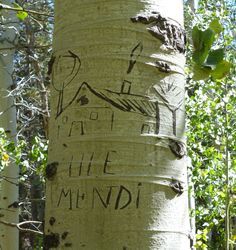
Top: Ojibwe and Abenaki birch bark scrolls. Used to hold ancestral stories and spirits, considered living beings themselves. Sometimes employed in Midewiwin, the Grand Medicine Lodge, a secretive teachings based religion amongst the New England native tribes.
Bottom: Basque Arboglyphs, a tradition among Basque-American sheepherders most commonly practiced between 1850's and 1930's. Found in Idaho, California, Oregon, and Nevada; these trees allow for Basque descendants to track the movement of their ancestors across the west in a time very little formal documentation of this group exist. Sheepherders once used these symbols to mark rest stops and shelter- and they could contain anything from poetry, local wildlife, images of prostitutes, or homages to Euskal Herria (which many had been forced to flee due to right wing violence).
85 notes
·
View notes
Text
Private companies are stealing public parks
“For years now, entertainment mega-corporations have targeted cash-strapped councils as amenable, affordable hosts for their events. From Clapham Common to Glasgow Green, city-dwellers across the UK have become accustomed to basslines vibrating their windows, five-metre fences encircling their playgrounds, and security guards policing what are effectively their gardens.
“Yet as entertainment companies try to recuperate massive pandemic losses with aggressive multi-year deals, while the climate crisis renders urban summers increasingly unbearable, the privatisation of public parkland is becoming harder to swallow.
“In April, dozens of Haringey residents descended on FoFP’s biggest-ever meeting to vent their frustrations, while a recent petition demanding private companies keep their hands off Finsbury Park was signed by thousands ... For the most part, the work of groups like FoFP and FCC is polite engagement with the council to ensure the park is properly maintained. Yet as councils’ approach to major events has become more aggressive, so have the friends groups’.
“In 2016, FoFP took Haringey to court over its outdoor events policy. The group lost the case – though it did win an agreement from Haringey that the money made from the park would be spent on it. Haringey claims to have done this, though to FoFP, the numbers don’t quite add up: while in information obtained by Novara Media via an FoI request, the council claims it spent £871,626 on staffing Finsbury Park in 2020-21, many have questioned where the money is going: the park has had no park ranger since late October, no on-site manager since May. ‘If you’ve got this money […] you sure as hell didn’t spend it here,’ says Simon, pointing to the chipped paint of the bench on which she’s sitting.”
#public parks#parks#public space#green spaces#greenery#local councils#councils#local government#land use#festivals#music festivals#finsbury park#haringey#clapham common#hyde park#london#glasgow green#uk
8 notes
·
View notes
Text
capstone update #1
TO REITERATE: I'm planning to produce a 30-min documentary film.
Hello, I'm finally here to update my blog!
I meant to do this last week, but didn't... I was struggling to wrap my head around this project and what I'll be doing this semester.
I think I'm a little crazy for taking this on. Sometimes it feels like too much, but I certainly won't be quitting.
My first reality check was trying to populate the workback plan. It was a necessary step, but so difficult. I had to come back to it a few times to get it sorted out. I always feel like I'm overlooking something when I'm planning out a project, and I've never tried to produce something of this magnitude before. But I sat down with my workback plan again tonight and finally have it in good shape. Coming back to it has helped me process what I'll need to do, and I feel pretty certain now that I'm not forgetting anything. I also recreated my workback plan in Notion, because I don't think I'll be able to stay on track if I only look at it on Google Sheets. (The formatting... the lack of color-coding and other viewing modes... Nah, homie, I can't. TwT) I also gave myself dates to complete things by. I know I can work to a deadline, and now I have a ton of them. Isn't that fantastic!
Anyway, I'm really happy with my organization on this project now that I have all my tasks thought out, written down, and with dates. The tricky part now will be keeping the Google Sheet updated according to the Notion.
Right now I have a bunch of tasks marked as "in progress." There's so much I need to do in the next two weeks, mostly making lists of people and Instagram accounts to reach out to. I already follow a lot of accounts but I have not created a master list for myself to keep track of them all. Once I have my list, I can start drafting up messages to send to them, asking if they might want to participate in my doc, or could put me in connection with people who would. I'm kind of worried that I don't have much to show for myself, a presence, or a reason why they should trust me, that kind of thing. But I'll try it anyway.
I also need to draft emails/ send texts/ make phone calls to people I know, who said in one way or another that they might be able to lend a voice to my project. Cast out a bunch of lines and see if I get any bites. 🎣
Another thing is, I want to find videos on YouTube and Vimeo of the ʻOnipaʻa Peace March that happened a couple weeks ago. I wasn't able to go myself, but I'd really like to incorporate footage of it into my film. Maybe someone would be willing to let me use a few of their shots. If not a person, maybe one of the local news outlets. I also need to do some research. I have a playlist of some news clips about the Red Hill water crisis from when I made my 5-minute piece about it in Fall '22. But there have been updates since then, and I need to collect even more. I'm not 100% sure what or how much I'll do with it yet. But my creative process is 'collect all the stuff, look at and absorb it all, ???, get vision, create the vision'... so step one is gathering more things. :)
Also want to find more PDFs. Last semester, I found some studies and national news articles about Red Hill, pollution by the Navy/ issues similar to what's happening here, but my research topic was persuasion, so I spent the vast majority of my time on that. There's definitely more out there, and I want to find it because I'm thinking of using scans/ screenshots in my film.
Oh, and I'm planning to request titles from ʻUluʻulu by 2.16. Gonna try my absolute best to stay on top of the deadlines I've set for myself.
LONG POST: FINITO!!!
#hawaii#documentary#film#red hill#water pollution#environment#nature#sustainability#water#land use#land ownership#uhwo#uhwo acm#uhwoacm#capstone
4 notes
·
View notes
Photo




Why Humans Build Up: The Rise of Towers, Temples and Skyscrapers
by Gregor Craigie, illustrated by Kathleen Fu
People have been constructing tall buildings for thousands of years, for many different reasons. Castle walls kept people safe. Utility towers transmit TV and cell-phone signals. Observatories give people a bird's-eye view of the world. Beautiful buildings stand out in the crowd. Skyscrapers provide housing for a lot of people. There are some good reasons for building up, and a few bad ones as well.
With a growing global population, we will need more and more space to live, learn and work in. But what does that mean for the health of the planet? Can we do it sustainably? Tall buildings may be part of the answer. From the Great Pyramids of Giza and the Leaning Tower of Pisa to the Burj Khalifa and the Shanghai Tower, Why Humans Build Up asks why and how we build higher and higher, and what that means for the planet.
note! Why Humans Build Up is geared for middle grade readers in architecture and history.
Engineering in Plain Sight: An Illustrated Field Guide to the Constructed Environment
by Grady Hillhouse (2022)
Engineering in Plain Sight extends the field guide genre from natural phenomena to human-made structures, making them approachable and understandable to non-engineers. It transforms readers' perspectives of the built environment, converting the act of looking at infrastructure from a mundane inevitability into an everyday diversion and joy. Each section of this accessible, informative book features colorful illustrations revealing the fascinating details of how the human-made world works. An ideal road trip companion, this book offers a fresh perspective on the parts of the environment that often blend into the background. Readers will learn to identify characteristics of the electrical grid, roadways, railways, bridges, tunnels, waterways, and more. Engineering in Plain Sight inspires curiosity, interest, and engagement in how the infrastructure around us is designed and constructed.
7 notes
·
View notes
Link
Invest Atlanta is requesting proposals for turning a 1-acre stretch of parking lots next to MARTA’s Garnett Station into affordable & market-rate housing!
The property is at 184 Forsyth Street. There is *way* to much underused space (mostly parking) around this Downtown rail station and it's past time for something to happen with it. Mixed-income housing would be a great outcome.
The Request for Proposals (RFP) also asks for the project to have "revenue sources other than rent paid by residents (ground floor retail, rooftop urban farm, etc.)"
Responses are due March 31, 2023.
You can spot Thread ATL's own Matt Garbett in the article/video linked above, talking about why these parking lots are a bad use of this land.
#atlanta#urban development#downtown atlanta#marta#transit oriented development#parking#land use#urbanism
9 notes
·
View notes
Photo

Land Cover in the Arctic Circle.
by pheebely
203 notes
·
View notes
Text




Source
59 notes
·
View notes
Text
Arable crops, some of which are fed to farm animals, occupy 12% of the planet’s land surface. But far more land (28%) is used for grazing: in other words, for pasture-fed meat and milk. Yet, across this vast area, farm animals that are entirely pasture-fed produce just 1% of the world’s protein. ...
Where there are cattle, there are fewer wild mammals, birds, reptiles and insects on the land, and fewer fish in the rivers. Perhaps most importantly – because of their crucial role in regulating living systems – there tend to be no large predators.
We don’t think about large predators in the UK, because we’ve exterminated them. Efforts to bring back lynx and wolves have so far been thwarted by the objections of livestock farmers. In the United States, where big carnivores still exist, federal and state agencies wage war against them on behalf of cattle and sheep farmers, often with astonishing brutality.
23 notes
·
View notes
Quote
Textile consumption causes the third largest land use and water use in the value chain, and the fifth largest material resource use and greenhouse gas emissions. Also, textiles cause pressures and impacts from their chemicals on the environment and climate. Textiles are on average “the fourth-highest source of pressure on the environment and climate change from a European consumption perspective,” the European Environment Agency (EEA) reported.
Baher Kamal, ‘Europe Sells to Africa and Asia 90% of Its Used Clothes, Textiles Waste’, Inter Press Service
#Inter Press Service#Baher Kamal#Textile consumption#land use#water use#material resource use#greenhouse gas emissions#Textiles#source of pressure on the environment and climate change#European Environment Agency
3 notes
·
View notes